Current Section: model
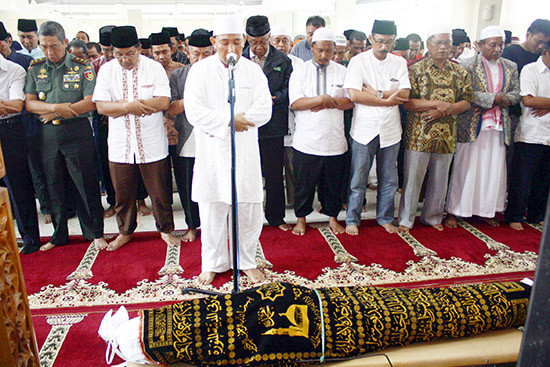
Lesson Praying Over the Deceased and Burying the Body
The funeral prayer is obligatory upon the group of Muslims that are present and not for everyone. It is a communal obligation because if some pray it, the sin is removed from the rest. The Prophet ﷺ gave glad tidings that he who prays it will have a reward equal to the size of a mountain. He said: «Whoever attends the funeral prayer will have until it is buried will have two qirats.» It was asked: "What are the two qirats?" He said: «Like two huge mountains.» (Al-Bukhari, 1325, Muslim, 945)

The Virtue of Attending the Funeral Prayer
Witnessing the funeral procession and following it has many benefits, the most important of which are: fulfilling the right of the deceased by praying for him, interceding for him and supplicating for him, fulfilling the rights of his family, consoling their thoughts at their misfortune regarding their dead relative, collecting the great reward for the mourners, taking heed and admonition by attending funerals and going to the cemeteries, etc.
1. It is recommended for the funeral prayer to be performed in congregation, and for the imam to stand in front of the congregation, as in the congregational prayer.
2. The deceased person is placed between the people praying and the qiblah, and the imam stands adjacent to the man’s head and the woman’s waist, as reported by the Prophet ﷺ. (Abu Dawud, 3194).
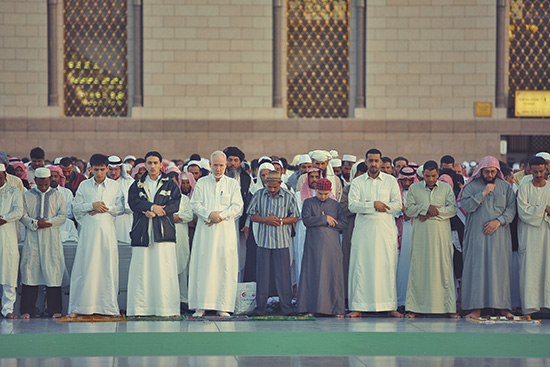
-
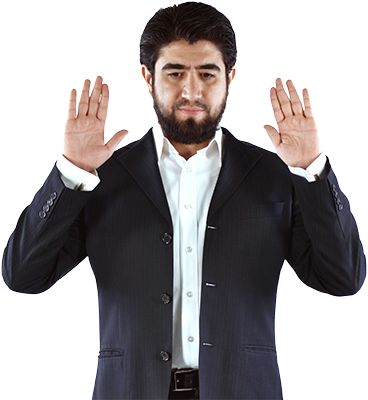
The First Takbeer
The praying person says the first takbeer, raising his hands to the level of his shoulders or ear lobes. Then, he places his right hand on the back of his left palm on his chest and does not read the opening supplication of the prayer; (instead) he seeks refuge in Allah, mentions his name, and recites Surat Al-Fatihah quietly.
The 2nd Takbeer
Then he says the takbeer for the second time and, after that, sends salutations upon the Prophet ﷺ using any wording, such as saying: “O Allah, bless and grant peace to our Prophet Muhammad.” And if he uses the most complete wording, then it is what the praying person says in the final tashahhud this is more complete. It is as follows: "O Allah, send salutations upon Muhammad and the family of Muhammad as You sent salutations upon Abraham and the family of Abraham, indeed you are full of glory and praise. O Allah, bless Muhammad and the family of Muhammad as You blessed Abraham and the family of Abraham; indeed, you are full of glory and praise."
The 3rd Takbeer
Then he says the third takbeer and supplicates for mercy, forgiveness, paradise, and elevation for the deceased, as Allah inspires his heart and tongue. If he has memorized some supplications reported from the Prophet ﷺ, then that is better.
Among those supplications are: «O Allah, forgive him and have mercy on him, give him health and pardon him, honor his abode, expand his entrance, wash him with water, snow, and hail, purify him from sins as you purify a white garment from filth, and replace him with an abode better than his home, a family better than his family, and a spouse better than his. a wife better than his wife, and admit him to Paradise, and protect him from the torment of the grave - or from the torment of the Fire.» (Muslim, 963)
The 4th Takbeer
Then he says the fourth takbeer and waits a little while, only saying the tasleem towards his right side.
It is permissible for the funeral prayer to be performed in the mosque, in a dedicated place outside the mosque, or in the cemetery. All of this was reported from the Prophet ﷺ.
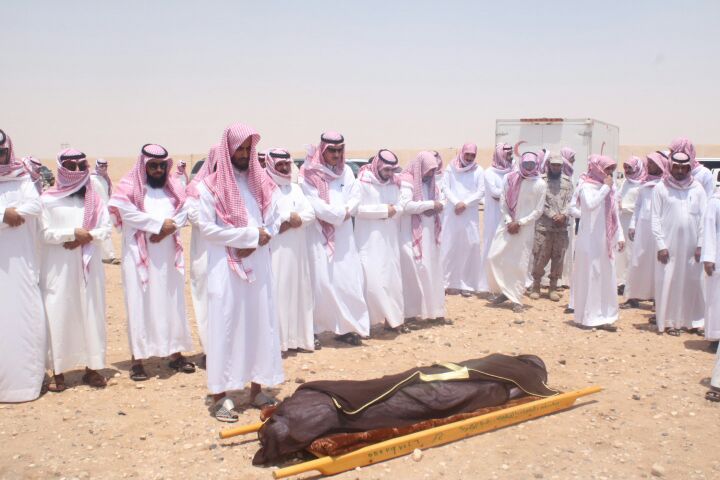
The Sunnah is to hasten to prepare the funeral, pray upon the deceased, take it to the cemetery, and bury it. On the authority of Abu Hurairah (may Allah be pleased with him) on the authority of the Prophet ﷺ who said: «Walk quickly with the deceased person, for if he was good, it is a good condition to which you are sending him on, but if he was otherwise, then it is an evil of which you are riding yourselves.» (Al-Bukhari, 1315, Muslim, 944)
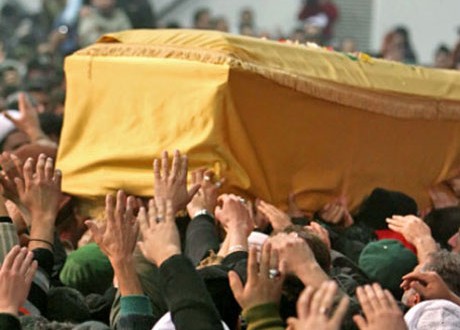
It is recommended for those who follow the funeral procession to participate in carrying it. Men and not women should carry the deceased. It is the Sunnah for those walking to be in front and behind. If the cemetery is far away, or it is difficult to carry the deceased, then there is nothing wrong with carrying it on a riding beast or in a vehicle.
Things to consider when burying the dead:
It is recommended for those who attended the burial to pray for the deceased after the burial for steadfastness and forgiveness. The Prophet ﷺ when he finished burying the dead, used to stand over it and say: «Seek forgiveness for your brother, and ask him for steadfastness, for now, he is being questioned.» (Abu Dawud, 3221)




